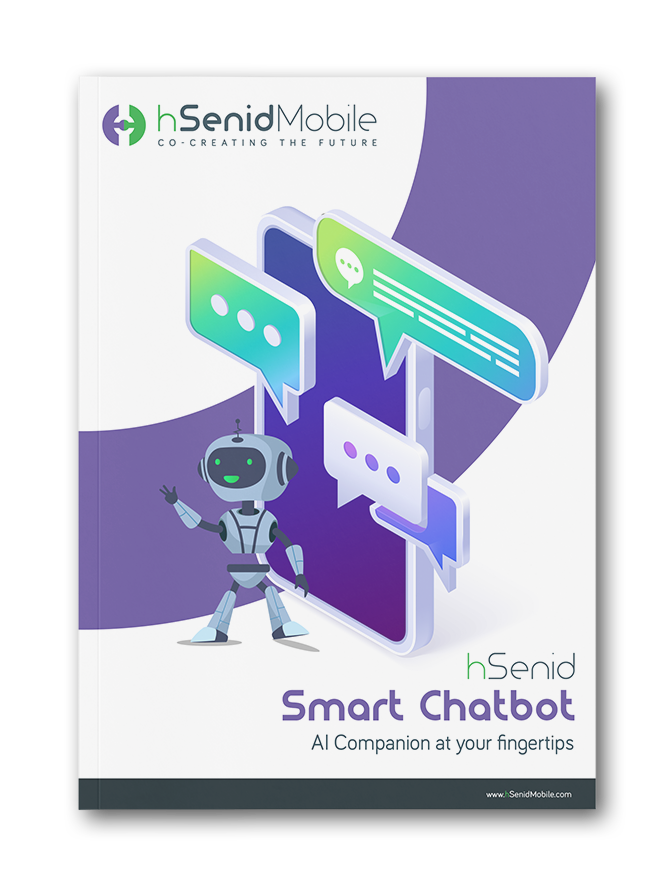Customer experience – this phrase is in circulation a lot these days. While
claims of offering a superior customer experience may be viewed as almost
cliché, its centrality to modern businesses cannot be argued. Every business,
regardless of industry or sector, is doing its utmost to enhance their
customer experience, because this is one of the cornerstones of success.
In todays’ digitized business environment, chatbots have become a vital tool that facilitates high quality customer experience. Chatbots have accelerated the speed of communication between customer and enterprise to an unprecedented level. They have helped streamline processes, thus elevating operational efficiency. The kind of smoothness that chatbots have infused into customer service has also been attributed to an increase in revenue.
Despite elevating the customer experience in so many amazing ways, traditional text-based chatbots still have their limitations. As they are rule-based, they can decipher only certain specific user inputs and they are limited to a set of predefined responses. They are unable to tackle complex queries if these have no reference point in their database. Thus, they are restricted in the kind of tasks that they can carry out.
As there is no need to manually type questions and instructions, being able to speak saves heaps of time and effort. Once the words are spoken, the software will provide the relevant information or execute the stated command. All the intermediate clicking of menu option after menu option is gone.
By opening the doors to regular conversational inputs, these chatbots are a lot more human-like. A customer feels like they are addressing an attentive listener who is capable of understanding the subtle nuances in their voices and providing personalized responses. So, although the interaction is automated, it feels far more personalized. This fosters a much closer bond between the organization and the customer.
In todays’ digitized business environment, chatbots have become a vital tool that facilitates high quality customer experience. Chatbots have accelerated the speed of communication between customer and enterprise to an unprecedented level. They have helped streamline processes, thus elevating operational efficiency. The kind of smoothness that chatbots have infused into customer service has also been attributed to an increase in revenue.
Despite elevating the customer experience in so many amazing ways, traditional text-based chatbots still have their limitations. As they are rule-based, they can decipher only certain specific user inputs and they are limited to a set of predefined responses. They are unable to tackle complex queries if these have no reference point in their database. Thus, they are restricted in the kind of tasks that they can carry out.
The game-changing innovation
Thankfully, technology never remains static and we now have a new, far superior alternative to traditional text-based chatbots: AI chatbots with voice recognition. A marvel of conversational AI, these voice-ready AI companions understand spoken queries. All a customer needs to do is simply talk to their device and they can get the information they seek and carry out a range of tasks.As there is no need to manually type questions and instructions, being able to speak saves heaps of time and effort. Once the words are spoken, the software will provide the relevant information or execute the stated command. All the intermediate clicking of menu option after menu option is gone.
Tech that is human-like
Because voice-ready AI chatbots use Natural Language Processing (NLP), customers are no longer limited to a certain set of phrases. The advanced algorithms analyze the audio input, converting it into text, and then processing it to understand the intent behind the spoken words. Colloquialisms and idiomatic expressions can be accurately interpreted and customers are free to speak the way they normally would to a human service agent.By opening the doors to regular conversational inputs, these chatbots are a lot more human-like. A customer feels like they are addressing an attentive listener who is capable of understanding the subtle nuances in their voices and providing personalized responses. So, although the interaction is automated, it feels far more personalized. This fosters a much closer bond between the organization and the customer.

Greater reach and functionality
AI chatbots with voice recognition are accessible to lots more people. They can be easily used by people with disabilities and those facing challenges with text input. The potential to include multiple languages makes it open to customers from a host of linguistic backgrounds, where customers get to select the language they are most comfortable with.AI chatbots that have speech recognition also boast a greater diversity in their functionality. With the combined capabilities of NLP and AI, they can handle far more complex and varied scenarios than traditional text-based chatbots, giving customers the ability to do a lot more online.
Take for instance a bank. Customers can use voice commands to check their account balances, transaction history, or request statements. They can initiate transfers by speaking their instructions, such as the recipient’s account details and transfer amount. Customers can use their voice to authorize bill payments. They can find the nearest ATM, reload their phone credits, streamline loan applications, and receive tailored financial planning advice. The list of possibilities for customers has increased tremendously. To top it off, these functions have become so much simpler and smoother – all of these can be performed without going through complex online banking interfaces or waiting for manual assistance.
Leaving the hard work to the experts
It is clear that if a business is to amplify its customer experience, it needs to introduce AI chatbots that have speech recognition capabilities. There is one tiny hitch, though: this kind of technology requires complex programming. Most companies face a technology gap as they do not have the technical know-how to create and integrate the software. The challenge does not end there. Both the business world and technology are in a constant state of flux and companies need to keep up with these rapid changes.What companies need is a reliable tech partner with domain experience. An enabler will take care of the conceptualizing and integration, freeing the company of the need to hire an expert. All a business needs to do is carry out due diligence and select the right enabler.








